Miele and Chlorine Bleach
8 years ago
Featured Answer
Sort by:Oldest
Comments (17)
- 8 years ago
- 8 years ago
Related Discussions
Tried chlorine bleach for first time... blech!
Comments (42)I use chlorine bleach exclusively and never had a problem. If your claims of dingy towels after use are true, you got something else going on. Percarbonate while an oxidizer, will not outperform LCB as a stain remover. My suspicion is you used too much. 4 rinses is substantial to have lingering effects. All LCB is not the same just as detergent. My question is why are your towels dingy anyway if you have been a user of percarbonate? Dingy clothes are caused by redeposition of soils not remaining in suspension during the wash process, or too low of temperature. Everybody has a preference, but LCB always has a place in the kitchen, bathroom, and laundry room. It is the gold standard for disinfection!...See MoreClorox Bleach Crystals (powder)
Comments (20)Sin, I was thinking the same. Often when people use cchlorine bleach its in a hot load since its whites, and the door won't open at the proper time to add these crystals. Not to mention they are water activated so the crystals put in the drum on wet clothing would not be good, and disolving them first would be a pain. On the other hand they have a longer shelf life. But still they would be fine for whitening but they are too weak to disinfect. I wouldn't use them for kitchen and bath either, think about it, why would anyone use chlorine in the bath and kitchen, to disinfect. I would think for anyone that just wants to use this for whitening, there's always the Clorox Gentle Care, I think it was Sparky that recommended this before, its a weaker formula but will whiten. The bottle says for TL&FL washers add 5 minutes after wash cycle starts, that's just wrong, too much contact time and the enzymes will be useless before they even get started. Does anyone remember if this was the same bleach directions Clorox used years ago before enzymes were a part of detergent?...See MoreChlorine Bleach Time
Comments (12)Thanks everyone. ....I was thinking of forcing it into the wash cycle, last 5or6 minutes as I also don't like the idea of it going into the first rinse. Roc I do have a spray bottle filled with alcohol. .however it has to be sprayed on and left wet for I think its around 5 minutes in order to disinfect. Dorey, sadly if you can smell any chlorine in your textiles than its still there and will continue damaging the fabric. When using chlorine bleach things should be rinsed until zero scent remains. I used to buy the cheap 10paks of toothbrushes at the dollar tree for use during strep infections...but I was given a box of over 500 kids toothbrushes, each factory sealed in plastic. Weve been using these as daily disposable T.brushes during strep and other infectious illness. I get a case every year from a school employee. They are sent to the school to be given to thechildren during dental health awareness but the school is over stocked and I agreed to take some off their hands lol. This spring I will most likely be given more and tthat's when I will have to express my thanks but I can't take anymore LOL. But these really came in handy. When treatment is over I'll get them new good brushes, actually I already have them. Hopefully no one else in the family gets sick as you know how stressed I get if I have piles of bedding to catch up on haha...See MoreMIELE... Don't purchase unless you want problems.
Comments (35)Gaffer June 2021 I couldn't open the doors on my Míele Washer and Dryer! I noticed the posts on these websites when trying to find out how to open the doors on my new Míele WWV 980 WPS washer, and Míele TWV 680 WP heat pump condenser dryer. I scoured the manuals to no avail, and no matter what I tried, I could not open the doors. I decided that Míele had reached an unprecedented low with these new machines, and I was desperate to run my laundry wash and dry. What I discovered, with the assistance of a helpful young lady at Míele in Melbourne, when I was finally able to get my call answered after about 3/4 of an hour, was that I simply had to pull harder on the door, and it snapped open, as did the door on the dryer. It was not really hard for an old bloke like me to open: I had just been afraid of pulling too hard, and maybe damaging the door locking mechanism. You have to give it a really firm pull, and it snaps open. Maybe it is Míele's attempt to ensure that smaller children do not open the door too easily to give the family small pet a wash or puff dry. Who knows? The machines are very easy to set up and use, and my brother and I have quickly set them up to be on our home Wi-Fi network, and controllable on the iPhone, and to use the options we want as Favorites. Basic options on the machines are closely related to those on our previous Míele washer, the W 487 S WPS, and Míele condenser dryer, the T270 C Novotronic. I started using Míele products in 1983, with a vacuum cleaner that lasted 23 years until the motor burned out due to some heavy duty cleaning up of cement dust and other rough dust. The second Míele vacuum cleaner has lasted 20 years without a problem, and I've just replaced that one with a new one. The last washer/dryer combination above lasted 16 years without a problem, and have been replaced in spite of still being in good order. We just wanted to move to more versatile machines. Our Míele conventional oven, a H5681BP, and conventional/microwave oven, a H5080BM, are both 10 years old without a problem, and the dishwasher, a G1220 SC, is 15 years old without a problem. If you have the latest Míele washer or dryer turned on, and the display is on, and there is a padlock symbol in it, then don't try to just pull it open, but touch the display add laundry option first, and follow your manual. But if the machine is switched off at the start/stop in the display, or at the wall, you should be able to just pull the door open with a very firm pull by placing your fingers behind the orange line on the chrome of the door at the edge, and just pull it open. I had been convinced I had bought a dud when I "couldn’t" open the door with a cautious pull, as I tend to do for fear of damaging a new appliance I am not familiar with, but it turned out I just needed to be a bit more assertive about it! I am not trying to tell you this is definitely the answer in your particular case, but it may well be, if you are a gentle soul like me! Cheers, Geoff....See More- 8 years ago
- 8 years ago
- 8 years ago
- 8 years ago
- 8 years agolast modified: 8 years ago
- 8 years ago
- 8 years ago
- 8 years ago
- 8 years agolast modified: 8 years ago
- 8 years ago
- 8 years ago
- 8 years ago
- 3 years ago
- 3 years ago
Related Stories
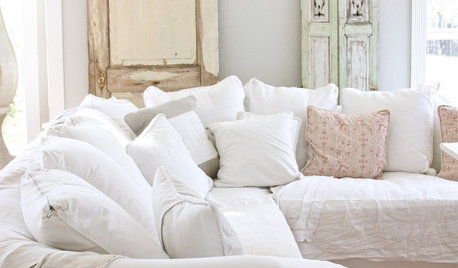
WHITEWhite Slipcovers for Pure Practicality
With a washing machine and bleach on your side, white slipcovers for couches and chairs keep your furniture looking pristine
Full Story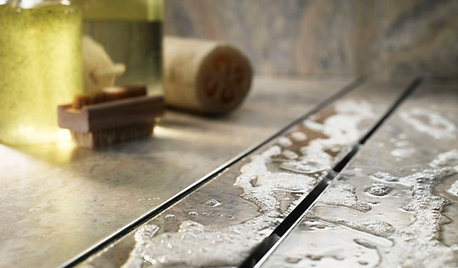
HOUSEKEEPING12 Cleaning Projects That Go a Little Deeper — Naturally
Eucalyptus oil for germy door handles. Baking soda for oven grime. Here are nontoxic solutions for often-overlooked cleaning jobs
Full Story
BEDROOMS11 Reasons to Love White Bedding
For easy bedding that makes neutrals sing and accessories pop, look to the white side
Full Story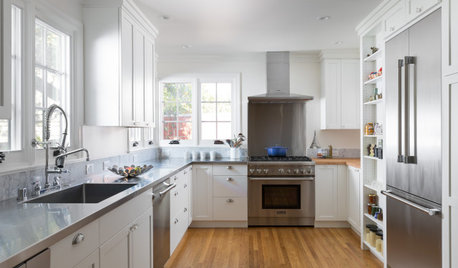
HOUSEKEEPINGHow to Clean Stainless Steel
Protect this popular kitchen material with a consistent but gentle cleaning routine
Full Story
HOUSEKEEPINGTackle Big Messes Better With a Sparkling-Clean Dishwasher
You might think it’s self-cleaning, but your dishwasher needs regular upkeep to keep it working hard for you
Full Story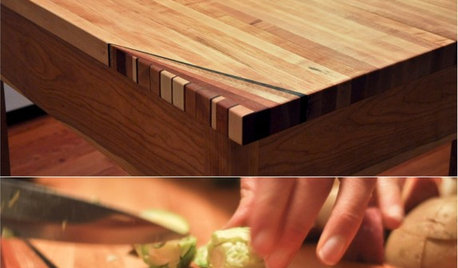
WOODWORKINGHow to Clean and Care for Your Butcher Block
Keep butcher block counters and boards looking sharp as a knife — and sanitized for safe food prep — with this advice from a pro woodworker
Full Story
HOUSEKEEPINGHow to Keep Your White Spaces Looking Great
Brighten up your white walls, floors and furniture with these cleaning and maintenance tips
Full Story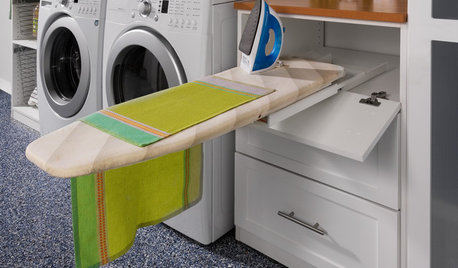
LAUNDRY ROOMS8 Ways to Make the Most of Your Laundry Room
These super-practical laundry room additions can help lighten your load
Full Story
TASTEMAKERSPro Chefs Dish on Kitchens: Michael Symon Shares His Tastes
What does an Iron Chef go for in kitchen layout, appliances and lighting? Find out here
Full Story
MOVINGYour First Home: Beautiful Basics and Multitaskers for Every Room
Here’s what to choose and what to avoid when outfitting a new house
Full Story



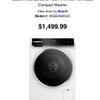
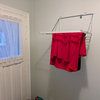

Laundry Mich